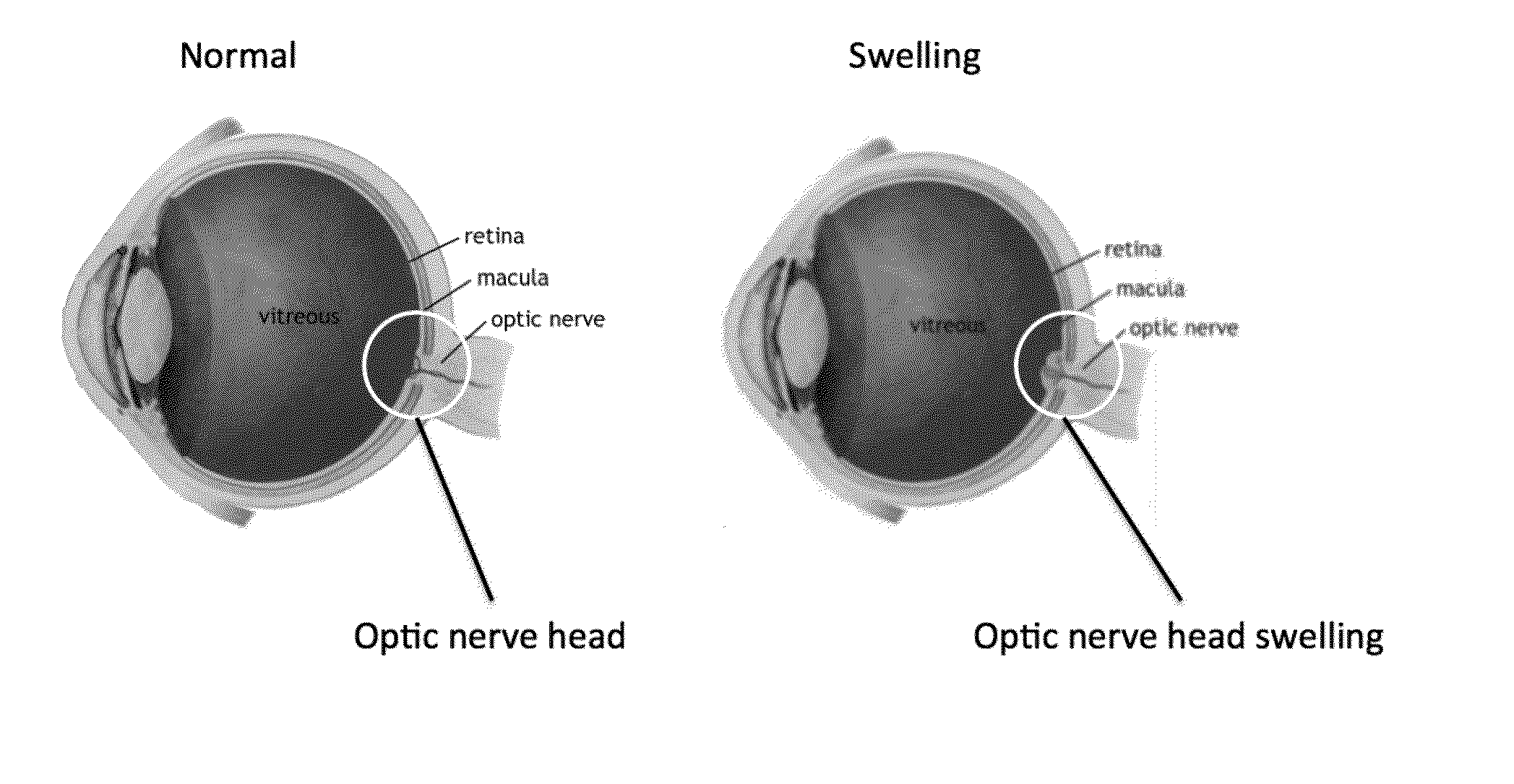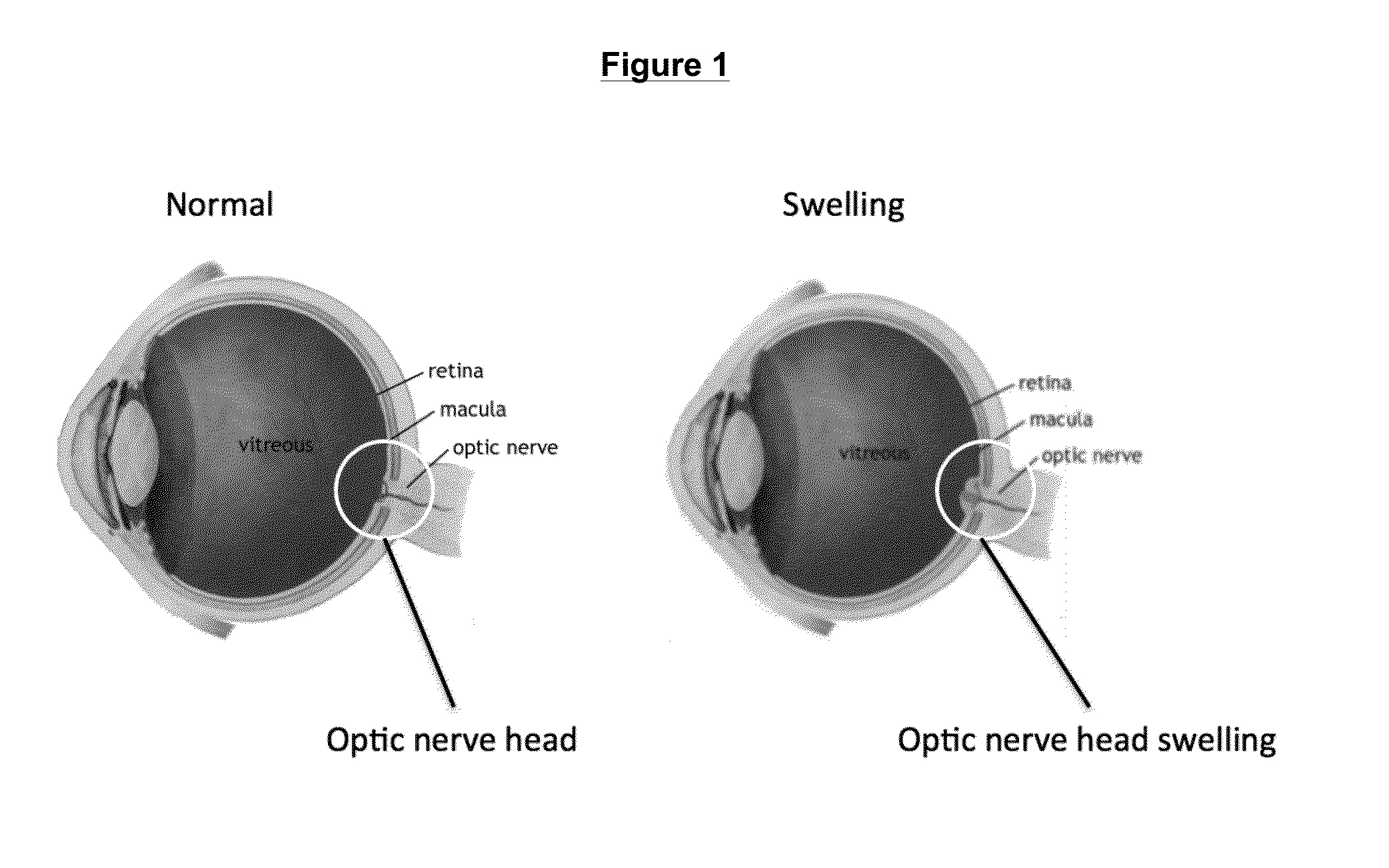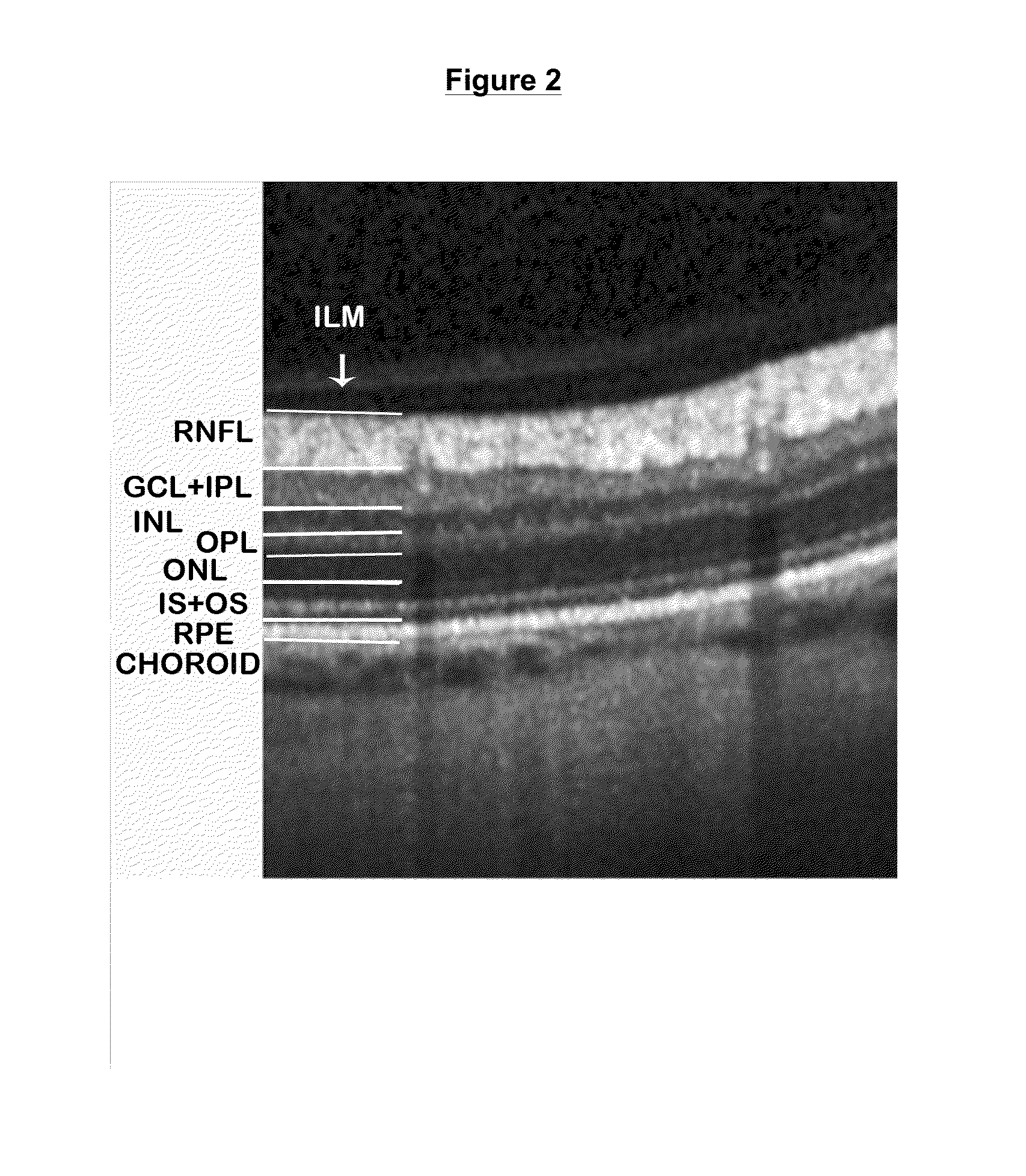Method and System for Optic Nerve Head Shape Quantification
a technology of optic nerve and quantification system, applied in the field of optic nerve head shape quantification, can solve the problems of inapplicability to pathologies with an increased onh, insufficient measurement of onh swelling, and limited existing methods
- Summary
- Abstract
- Description
- Claims
- Application Information
AI Technical Summary
Benefits of technology
Problems solved by technology
Method used
Image
Examples
examples
[0037]The method can be used to quantify ONH shape even in conditions when the ONH might be highly deformed, like, for example, in multiple sclerosis, neuromyelitis optica, optic neuritis, idiopathic intracranial hypertension, brain tumors, vascular disorders of the eye or optic nerve, normal pressure hydrocephalus or other diseases.
Example
Measurement of Swelling During an Acute Optic Neuritis or Vascular Event
[0038]In an exemplary embodiment of the present invention, swelling or flattening is quantified during an acute inflammation, e.g. an optic neuritis, both in single measurements (e.g. swollen / flattened ONH in comparison to a reference group (e.g. a reference database from healthy controls) and follow up measurements (e.g. ONH swelling or flattening over a period of time or in response to treatment in a single patient).
[0039]Further, swelling or flattening is quantified, for example, during an acute or chronic vascular event, e.g. an embolism of the central retinal artery, both...
example
Measurement of Real-Time ICP Changes
[0046]Further, by way of example, short-term changes in ICP are derived. For this, recorded B-scans are limited in number and ONH shape is derived from only few (as many as one) B-scan(s) to achieve a high time resolution. In this case, the ONH measurement can include less than the full ONH and be limited to a smaller area. B-scans are then recorded continuously over a time period and the changes in ONH shape (e.g. volume, area or height) are described over time.
[0047]FIG. 9 shows the workflow for this example: (1) OCT is taken from a single eye; (2) a defined region over the ONH is repeatedly measured over time; (3) ONH shape data is calculated using the described methods; (4) from these data over time real-time changes in ICP can be predicted; and (5) the validity of this may be supported by calibration data from cross-sectional studies comparing actual ICP with ONH shape data, or with specimen specific data from a single patient for longitudina...
PUM
 Login to View More
Login to View More Abstract
Description
Claims
Application Information
 Login to View More
Login to View More - R&D
- Intellectual Property
- Life Sciences
- Materials
- Tech Scout
- Unparalleled Data Quality
- Higher Quality Content
- 60% Fewer Hallucinations
Browse by: Latest US Patents, China's latest patents, Technical Efficacy Thesaurus, Application Domain, Technology Topic, Popular Technical Reports.
© 2025 PatSnap. All rights reserved.Legal|Privacy policy|Modern Slavery Act Transparency Statement|Sitemap|About US| Contact US: help@patsnap.com



